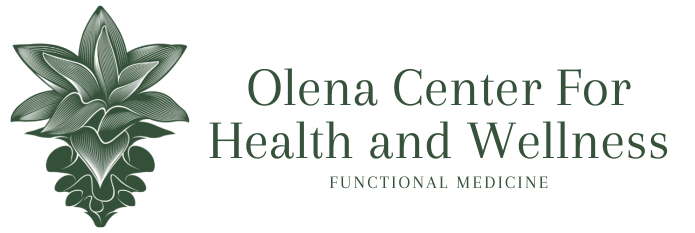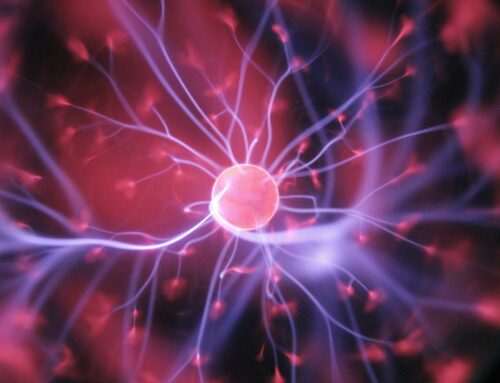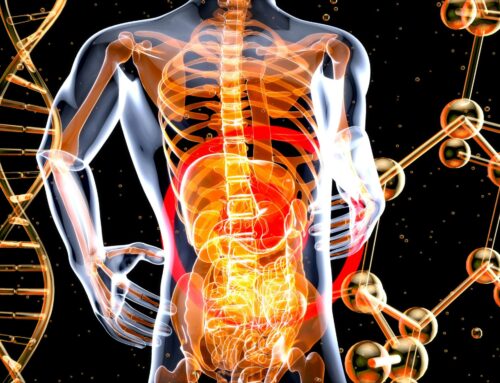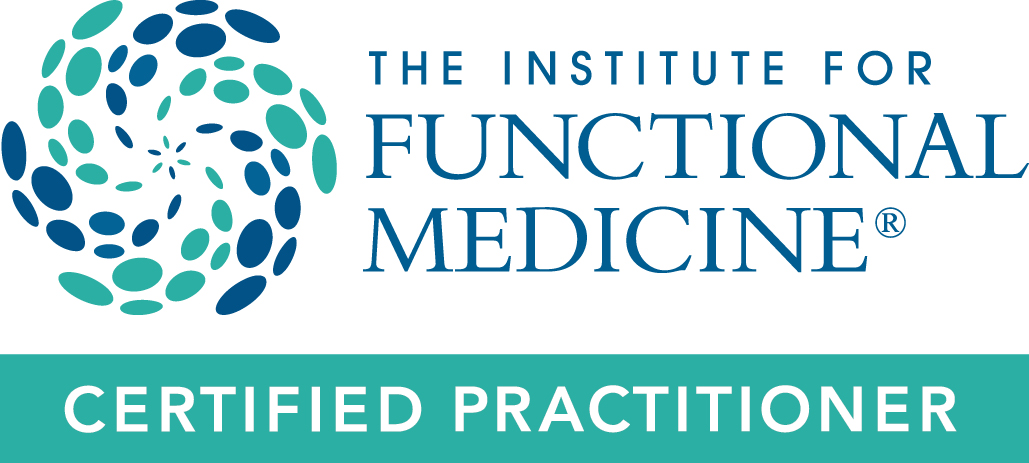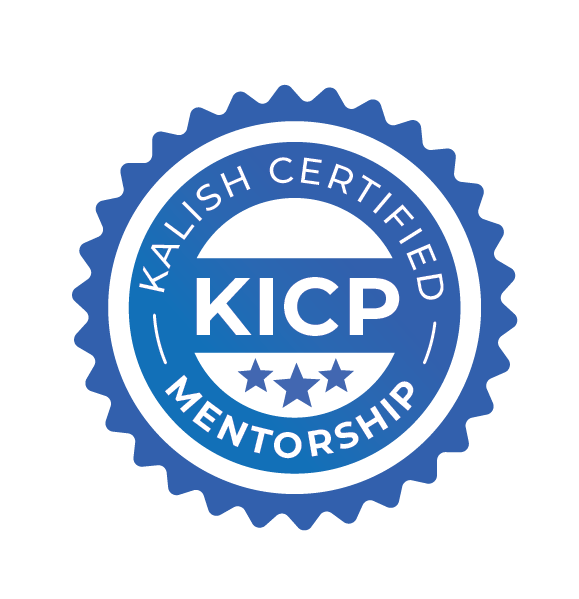In the pursuit of improving our muscle mass, in addition to exercise, we also want to make sure we have optimal nutrition to support muscle growth. Building muscle requires a lot of energy as well as building blocks! In addition, things like nutrient deficiencies, inflammation, and insulin resistance can get in the way of muscle building.
I have harped on previous blogs on eating healthy by increasing our plant and fiber intake. Increasing your plant intake and decreasing heavily processed/packaged food can reduce inflammation and improve insulin resistance. In addition, by having a wide variety of plants, you are likely to ensure adequate intake of necessary vitamins and minerals, supporting overall muscle cell function.
If you are not getting enough essential nutrients, supplementation with a multivitamin and possibly magnesium can be helpful (see my previous blog). But in addition to those things, here are a few areas we may want to focus on when building muscle.
Protein: In healthy adults, protein can improve muscle mass and strength when combined with resistance exercises (12–14). It makes sense, as our muscles are made of protein. However, the question is, how much protein is the right amount?
Healthy adults’ recommended daily allowance (RDA) is 0.8 gm of protein per kg of lean body mass per day (equivalent to 0.36 gm per pound). In some studies, the amount of protein to increase muscle mass and strength in healthy adults was around 1.6 gm/kg/day (12), double the RDA. However, this benefit was not necessarily seen in older adults. Studies in older adults have shown mixed results, with perhaps the most significant benefit of protein supplementation seen in older adults with insufficient protein intake at baseline. (15–17). Overall, higher protein consumption may benefit specific individuals, especially if they are trying to gain muscle mass.
That said, the long-term benefits of higher protein consumption are unclear to me. Some people advocate for a protein intake to be higher than the RDA to build muscle (thereby increasing your function in older age). In contrast, others support a lower protein consumption to improve longevity (as seen with Dr. Valter Longo’s research in the Blue Zones). So, what does that mean? Currently, my general guideline for most patients is as follows:
- For healthy adults, ensure you are getting at least the recommended daily allowance of protein at 0.8 gm/kg/day or 0.36 gm/lb/day. This amount is based on your lean body mass.
- Example: a 150 lb person would require about 54 grams/day of protein.
- For an easy online calculator, go to DRI Calculator for Healthcare Professionals | National Agricultural Library (usda.gov)
- For older adults, to build/maintain muscle mass, consider increasing this to 1.0 gm/kg/day.
- Space out your protein throughout the day, and ideally, take 20–30 grams of that protein after exercise.
- Focus on getting healthy protein. Aim for wild game, pasture-raised meat, fish a few times per week (wild-caught salmon, sardines, anchovies), and plant-based proteins, such as beans, legumes, and nuts.
Examples of protein content in food:

Take home: The right amount of protein is highly individual, depending on your goals (such as muscle building or weight loss) and health conditions. I encourage you to work with your healthcare provider and a nutritionist to determine your best protein goal.
Creatine. Creatine is a natural compound created from the amino acids arginine, glycine, and methionine. Your body makes about 1 gram of creatine daily, assuming you have normal kidney, liver, and pancreas function. The rest of your creatine comes from your diet, mainly seafood and red meat. This creatine is then stored in the muscles and brain and used as a quick source of stored energy (in the form of phosphocreatine). This storage must be replenished as you break down about 2% of your creatine daily, forming creatinine (the by-product measured on blood tests).
For people who are eating animal meats, you will likely get adequate creatine from your diet. However, for those on protein-restricted diets or who are vegetarians or vegans, the amount of creatine from the diet may be limited. In these cases, supplementation with creatine may be considered.

Studies have demonstrated that creatine supplementation increases muscle mass, even in older adults, and may help improve bone mass and brain injury. Supplementation with creatine may:
- Improve or preserve muscle mass and strength even in older adults (14,18,19). One study showed it may even enhance muscle strength and mass without associated resistance training and may be an option to delay atrophy in older adults (20).
- Improve bone health. Studies have shown improvements in bone mineral density, although this requires at least a year.
- Possibly improve cognitive health. Creatine supplementation increases brain creatine levels. Some preliminary research suggests possible benefits in traumatic brain injury, although there is not enough data showing improvements in other neurodegenerative or cognitive conditions (21,22).
For those with chronic kidney disease or on dialysis, creatine supplementation may be even more critical. These patients generally are on a protein-restricted diet (less creatine coming in), and the kidney’s ability to help make creatine is impaired (23–25). Both things set them up for worse muscle and overall function.
Let me get nerdy for a minute (or two): A common misconception is that taking creatine will worsen kidney function, but let me explain why this is not the case. 1.6–2% of the body’s creatine and phosphocreatine are degraded daily to creatinine, which is then excreted in our urine. Healthy kidneys filter this creatinine, which would otherwise build up in the blood. Understanding this process, we use creatinine to indirectly measure how well our kidneys function. Keeping in mind, though, that the amount of creatinine in the blood is related to 1) how much muscle mass a person has (more muscle = more creatine = more creatinine waste product) and 2) how much creatine is ingested (from diet or supplementation). So, if you have a higher muscle mass or are ingesting more creatine, you will make more creatinine, and your creatinine blood levels will increase. Creatine or creatinine are not dangerous to the kidneys. Still, as we use creatinine to interpret kidney function, we must consider these two things (muscle mass and creatine intake) when analyzing blood creatinine. Overall, if you are taking creatine supplementation and have kidney disease, please discuss this with your provider.
My general guidelines:
- Get adequate protein and consider some of that protein from high-quality animal sources to get some needed creatine.
- If you plan to start creatine supplementation, consult your healthcare provider if you have medical issues.
- Creatine is generally safe at the recommended dosages of 3–5 grams per day. Creatine has GRAS (generally regarded as safe) status with the FDA.
- When choosing a creatine supplement, be mindful of other ingredients in the product. Caffeine is particularly common in creatine products and may cause adverse effects in certain individuals.
Omega-3 fatty acids. Omega-3 fatty acids are beneficial fatty acids that are a part of the membranes surrounding every cell in our body. One of the main benefits omega-3 fats have is that they can help offset inflammation in the body; inflammation can wreak havoc in the body and lead to catabolic breakdown of our muscle mass. Some studies demonstrate that omega-3 fatty acids can help preserve muscle strength and recovery in young, healthy adults and athletes (26,27). For older adults, though, the studies are mixed (28,29).
A great way to get omega-3 fats in your diet is by incorporating:
- Fatty fish: salmon, sardines, herring, mackerel, trout. Aim for 2.5 ounces a few times a week.
- Flaxseeds or chia seeds. The bonus is that one tablespoon of flax or chia seeds has 2.5 grams of fiber!
- Walnuts. They are also chock full of antioxidants!
- Omega-3 fortified eggs or other foods.
- Flax or Algae oil. This is an excellent alternative if looking for a plant-based source of omega-3s.
- Fish or krill oil supplements. These are alternatives when you can’t get your omega-3s from your food. If you take supplementation, discuss with your healthcare provider how much would be appropriate.
Vitamin D. Most people think of vitamin D concerning bone health, but it is also vital in many other functions in the body, including our immune system, brain function, and muscle function! Usually, our body will make vitamin D with exposure to sunlight. However, with the advent of sunscreen and the rise in skin cancers, most of us, even in Hawaii, do not get enough sunlight to make adequate amounts of vitamin D. Studies have shown that low vitamin D is linked with muscle weakness and frailty in older adults, although supplementation in this population did not seem to have tremendous benefits on frailty (30–32). However, given the wide-ranging impacts of vitamin D, although it may not lead to considerable gains in muscle mass, it can improve other measures. I would recommend checking and replacing vitamin D levels in deficient patients.
My overall take home:
- Get at least your daily recommended amount of protein, aiming for higher-quality protein sources.
- If you are particularly frail, discuss other potential strategies to improve your muscle mass with your healthcare provider, including higher protein targets or possible supplementation.
Happy muscle building!
REFERENCES:
- Faulkner JA, Larkin LM, Claflin DR, Brooks SV. Age-related changes in the structure and function of skeletal muscles. Clin Exp Pharmacol Physiol. 2007 Nov;34(11):1091–6. doi: 10.1111/j.1440–1681.2007.04752.x. PMID: 17880359.
- Sherrington C, Fairhall N, Wallbank G, Tiedemann A, Michaleff ZA, Howard K, Clemson L, Hopewell S, Lamb S. Exercise for preventing falls in older people living in the community: an abridged Cochrane systematic review. Br J Sports Med. 2020 Aug;54(15):885–891. doi: 10.1136/bjsports-2019–101512. Epub 2019 Dec 2. PMID: 31792067.
- Downey C, Kelly M, Quinlan JF. Changing trends in the mortality rate at 1-year post hip fracture — a systematic review. World J Orthop. 2019 Mar 18;10(3):166–175. doi: 10.5312/wjo.v10.i3.166. PMID: 30918799; PMCID: PMC6428998.
- Schnell S, Friedman SM, Mendelson DA, Bingham KW, Kates SL. The 1-year mortality of patients treated in a hip fracture program for elders. Geriatr Orthop Surg Rehabil. 2010 Sep;1(1):6–14. doi: 10.1177/2151458510378105. PMID: 23569656; PMCID: PMC3597289.
- Cruz-Jentoft AJ, Bahat G, Bauer J, Boirie Y, Bruyère O, Cederholm T, Cooper C, Landi F, Rolland Y, Sayer AA, Schneider SM, Sieber CC, Topinkova E, Vandewoude M, Visser M, Zamboni M; Writing Group for the European Working Group on Sarcopenia in Older People 2 (EWGSOP2), and the Extended Group for EWGSOP2. Sarcopenia: revised European consensus on definition and diagnosis. Age Ageing. 2019 Jan 1;48(1):16–31. doi: 10.1093/ageing/afy169. Erratum in: Age Ageing. 2019 Jul 1;48(4):601. PMID: 30312372; PMCID: PMC6322506.
- Hanlon P, Nicholl BI, Jani BD, Lee D, McQueenie R, Mair FS. Frailty and pre-frailty in middle-aged and older adults and its association with multimorbidity and mortality: a prospective analysis of 493 737 UK Biobank participants. Lancet Public Health. 2018 Jul;3(7):e323-e332. doi: 10.1016/S2468–2667(18)30091–4. Epub 2018 Jun 14. PMID: 29908859; PMCID: PMC6028743.
- Suetta C, Haddock B, Alcazar J, Noerst T, Hansen OM, Ludvig H, Kamper RS, Schnohr P, Prescott E, Andersen LL, Frandsen U, Aagaard P, Bülow J, Hovind P, Simonsen L. The Copenhagen Sarcopenia Study: lean mass, strength, power, and physical function in a Danish cohort aged 20–93 years. J Cachexia Sarcopenia Muscle. 2019 Dec;10(6):1316–1329. doi: 10.1002/jcsm.12477. Epub 2019 Aug 16. PMID: 31419087; PMCID: PMC6903448.
- Daly RM, Dalla Via J, Duckham RL, Fraser SF, Helge EW. Exercise for the prevention of osteoporosis in postmenopausal women: an evidence-based guide to the optimal prescription. Braz J Phys Ther. 2019 Mar-Apr;23(2):170–180. doi: 10.1016/j.bjpt.2018.11.011. Epub 2018 Nov 22. PMID: 30503353; PMCID: PMC6429007.
- Memme JM, Erlich AT, Phukan G, Hood DA. Exercise and mitochondrial health. J Physiol. 2021 Feb;599(3):803–817. doi: 10.1113/JP278853. Epub 2019 Dec 9. PMID: 31674658.
- Walsh JJ, Tschakovsky ME. Exercise and circulating BDNF: Mechanisms of release and implications for the design of exercise interventions. Appl Physiol Nutr Metab. 2018 Nov;43(11):1095–1104. doi: 10.1139/apnm-2018–0192. Epub 2018 May 18. PMID: 29775542.
- Ekelund, U. et al. Does physical activity attenuate, or even eliminate, the detrimental association of sitting time with mortality? A harmonised meta-analysis of data from more than 1 million men and women. Lancet388, 1302–1310 (2016).
- Pasiakos SM, McLellan TM, Lieberman HR. The effects of protein supplements on muscle mass, strength, and aerobic and anaerobic power in healthy adults: a systematic review. Sports Med. 2015 Jan;45(1):111–31. doi: 10.1007/s40279–014–0242–2. PMID: 25169440.
- Morton RW, Murphy KT, McKellar SR, Schoenfeld BJ, Henselmans M, Helms E, Aragon AA, Devries MC, Banfield L, Krieger JW, Phillips SM. A systematic review, meta-analysis and meta-regression of the effect of protein supplementation on resistance training-induced gains in muscle mass and strength in healthy adults. Br J Sports Med. 2018 Mar;52(6):376–384. doi: 10.1136/bjsports-2017–097608. Epub 2017 Jul 11. Erratum in: Br J Sports Med. 2020 Oct;54(19):e7. PMID: 28698222; PMCID: PMC5867436.
- Valenzuela PL, Morales JS, Emanuele E, Pareja-Galeano H, Lucia A. Supplements with purported effects on muscle mass and strength. Eur J Nutr. 2019 Dec;58(8):2983–3008. doi: 10.1007/s00394–018–1882-z. Epub 2019 Jan 2. PMID: 30604177.
- Cuyul-Vásquez I, Pezo-Navarrete J, Vargas-Arriagada C, Ortega-Díaz C, Sepúlveda-Loyola W, Hirabara SM, Marzuca-Nassr GN. Effectiveness of Whey Protein Supplementation during Resistance Exercise Training on Skeletal Muscle Mass and Strength in Older People with Sarcopenia: A Systematic Review and Meta-Analysis. Nutrients. 2023 Aug 2;15(15):3424. doi: 10.3390/nu15153424. PMID: 37571361; PMCID: PMC10421506.
- Jang YJ. The Effects of Protein and Supplements on Sarcopenia in Human Clinical Studies: How Older Adults Should Consume Protein and Supplements. J Microbiol Biotechnol. 2023 Feb 28;33(2):143–150. doi: 10.4014/jmb.2210.10014. Epub 2022 Oct 31. PMID: 36474318; PMCID: PMC9998208.
- Thomas DK, Quinn MA, Saunders DH, Greig CA. Protein Supplementation Does Not Significantly Augment the Effects of Resistance Exercise Training in Older Adults: A Systematic Review. J Am Med Dir Assoc. 2016 Oct 1;17(10):959.e1–9. doi: 10.1016/j.jamda.2016.07.002. PMID: 27670605; PMCID: PMC5065619.
- Stares A, Bains M. The Additive Effects of Creatine Supplementation and Exercise Training in an Aging Population: A Systematic Review of Randomized Controlled Trials. J Geriatr Phys Ther. 2020 Apr/Jun;43(2):99–112. doi: 10.1519/JPT.0000000000000222. PMID: 30762623.
- Dos Santos EEP, de Araújo RC, Candow DG, Forbes SC, Guijo JA, de Almeida Santana CC, Prado WLD, Botero JP. Efficacy of Creatine Supplementation Combined with Resistance Training on Muscle Strength and Muscle Mass in Older Females: A Systematic Review and Meta-Analysis. Nutrients. 2021 Oct 24;13(11):3757. doi: 10.3390/nu13113757. PMID: 34836013; PMCID: PMC8619193.
- Moon A, Heywood L, Rutherford S, Cobbold C. Creatine supplementation: can it improve quality of life in the elderly without associated resistance training? Curr Aging Sci. 2013 Dec;6(3):251–7. doi: 10.2174/1874609806666131204153102. PMID: 24304199.
- Forbes SC, Cordingley DM, Cornish SM, Gualano B, Roschel H, Ostojic SM, Rawson ES, Roy BD, Prokopidis K, Giannos P, Candow DG. Effects of Creatine Supplementation on Brain Function and Health. Nutrients. 2022 Feb 22;14(5):921. doi: 10.3390/nu14050921. PMID: 35267907; PMCID: PMC8912287.
- Ainsley Dean PJ, Arikan G, Opitz B, Sterr A. Potential for use of creatine supplementation following mild traumatic brain injury. Concussion. 2017 Mar 21;2(2):CNC34. doi: 10.2217/cnc-2016–0016. PMID: 30202575; PMCID: PMC6094347.
- Antonio J, Candow DG, Forbes SC, Gualano B, Jagim AR, Kreider RB, Rawson ES, Smith-Ryan AE, VanDusseldorp TA, Willoughby DS, Ziegenfuss TN. Common questions and misconceptions about creatine supplementation: what does the scientific evidence really show? J Int Soc Sports Nutr. 2021 Feb 8;18(1):13. doi: 10.1186/s12970–021–00412-w. PMID: 33557850; PMCID: PMC7871530.
- Post A, Tsikas D, Bakker SJL. Creatine is a Conditionally Essential Nutrient in Chronic Kidney Disease: A Hypothesis and Narrative Literature Review. Nutrients. 2019 May 10;11(5):1044. doi: 10.3390/nu11051044. PMID: 31083291; PMCID: PMC6567063.
- van der Veen Y, Post A, Kremer D, Koops CA, Marsman E, Appeldoorn TYJ, Touw DJ, Westerhuis R, Heiner-Fokkema MR, Franssen CFM, Wallimann T, Bakker SJL. Chronic Dialysis Patients Are Depleted of Creatine: Review and Rationale for Intradialytic Creatine Supplementation. Nutrients. 2021 Aug 6;13(8):2709. doi: 10.3390/nu13082709. PMID: 34444869; PMCID: PMC8400647.
- Heileson JL, Funderburk LK. The effect of fish oil supplementation on the promotion and preservation of lean body mass, strength, and recovery from physiological stress in young, healthy adults: a systematic review. Nutr Rev. 2020 Dec 1;78(12):1001–1014. doi: 10.1093/nutrit/nuaa034. PMID: 32483626.
- Tomczyk M, Heileson JL, Babiarz M, Calder PC. Athletes Can Benefit from Increased Intake of EPA and DHA-Evaluating the Evidence. Nutrients. 2023 Nov 26;15(23):4925. doi: 10.3390/nu15234925.
- Bischoff-Ferrari HA, Vellas B, Rizzoli R, Kressig RW, da Silva JAP, Blauth M, Felson DT, McCloskey EV, Watzl B, Hofbauer LC, Felsenberg D, Willett WC, Dawson-Hughes B, Manson JE, Siebert U, Theiler R, Staehelin HB, de Godoi Rezende Costa Molino C, Chocano-Bedoya PO, Abderhalden LA, Egli A, Kanis JA, Orav EJ; DO-HEALTH Research Group. Effect of Vitamin D Supplementation, Omega-3 Fatty Acid Supplementation, or a Strength-Training Exercise Program on Clinical Outcomes in Older Adults: The DO-HEALTH Randomized Clinical Trial. JAMA. 2020 Nov 10;324(18):1855–1868. doi: 10.1001/jama.2020.16909. PMID: 33170239; PMCID: PMC7656284.
- Timraz M, Binmahfoz A, Quinn TJ, Combet E, Gray SR. The Effect of Long Chain n-3 Fatty Acid Supplementation on Muscle Strength in Older Adults: A Systematic Review and Meta-Analysis. Nutrients. 2023 Aug 14;15(16):3579. doi: 10.3390/nu15163579. PMID: 37630768; PMCID: PMC10458650.
- Vaes AMM, Brouwer-Brolsma EM, Toussaint N, de Regt M, Tieland M, van Loon LJC, de Groot LCPGM. The association between 25-hydroxyvitamin D concentration, physical performance and frailty status in older adults. Eur J Nutr. 2019 Apr;58(3):1173–1181. doi: 10.1007/s00394–018–1634–0. Epub 2018 Apr 25. PMID: 29691654; PMCID: PMC6499878.
- Vaes AMM, Tieland M, Toussaint N, Nilwik R, Verdijk LB, van Loon LJC, de Groot LCPGM. Cholecalciferol or 25-Hydroxycholecalciferol Supplementation Does Not Affect Muscle Strength and Physical Performance in Prefrail and Frail Older Adults. J Nutr. 2018 May 1;148(5):712–720. doi: 10.1093/jn/nxy024. PMID: 30053278.
- Ren Y, Lu A, Wang B, Wang C. Nutritional Intervention Improves Muscle Mass and Physical Performance in the Elderly in the Community: A Systematic Review and Meta-Analysis. Life (Basel). 2023 Dec 31;14(1):70. doi: 10.3390/life14010070. PMID: 38255685; PMCID: PMC10817341.
For more useful information on functional holistic health, you can visit our FREE video library here.
About the Author:
Dr. Eri Shimizu is a board certified in Internal Medicine Doctor and certified through the Institutes of Functional Medicine. She earned a Bachelor of Science in Environmental Bioengineering from the University of Hawaii at Manoa and graduated summa cum laude from Creighton University Medical School. She completed her Internal Medicine residency at UCLA and worked at a Los Angeles county hospital. In 2012, she returned to Hawaii and served as a Hospitalist at Maui Memorial Medical Center. Maui is now home with her husband, two children, and a fighting fish named Rainbow.
Schedule a FREE Functional Medicine Health Consult with Dr. Eri.
